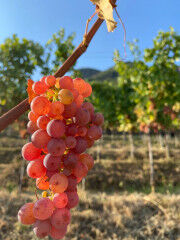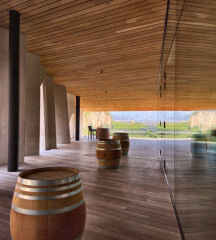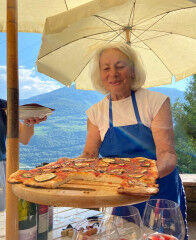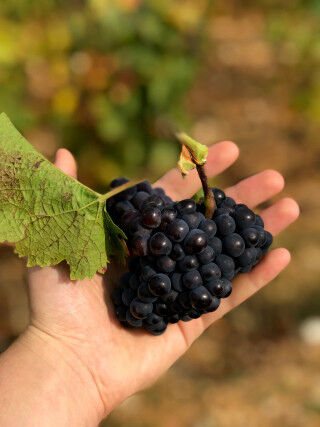Italy's Südtirol - Alto Adige Wine Region: A Small Land Shows Its Greatness
Italy is home to a very special wine region known as the South Tyrol. Located in the north, at the border with Austria and surrounded on three sides by the Alps and Dolomites, this wine region is steeped in ancient wine-making techniques dating back over 1,300 years ago. With less name recognition than say, Tuscany or Piedmont, especially amongst non wine lovers, this land is one of the most difficult places in Italy to cultivate grapes.
In this article we will dive in to:
- The Alto Adige Wine Region
- What are the differences between wine made at different altitudes?
- How is the wine from Alto Adige?
- Is there something particular about Alto Adige soils in relation to wine?
- How about some Alto Adige wine names?
- Who are the members of the Alto Adige Wine consortium?
- The real secret to the success of the local Alto Adige wine makers
- How many wine bottles are produced in Alto Adige?
- Modern wine making techniques and traditional knowledge in the new generations
Last weekend, the Alto Adige Wine Consortium held its third edition of the Alto Adige Wine Summit, the most important wine event in this beautiful area. This gave us a perfect opportunity to explore the South Tyrol, with its lovely castles, flowering wooden balconies, meadows, forests, lakes, and apple orchards.
But Alto Adige is more than just a pretty face - on the slopes of its steep mountains, we find prolific vines being cultivated. Some of the vineyards reach an astounding 1000m in altitude. As you might imagine, tending these vineyards is a daily challenge - so much so that pruning and harvesting must all be done by hand. You gotta really love your land to make those kind of incredible sacrifices and commitments!
Never one to lag behind, we get started promptly at 9:30AM, heading up to 700 meters of altitude in our quest to learn more about the intriguing Pinot grapes of the Kettmeiri winery. Leading the way is winemaker Josef Romen, a forse of nature who fills us in on the difficulties this 100-year old winery faces. The wine estate is dedicated to creating the South Tyrolean bubbles wine-lovers have enjoyed since the 1960s, but the toil involved is intense, as to be imagined.
Italian Südtirol Alto Adige Wines show their "Altitude"
The difference is that you get more of an aromatic quality with the higher altitude. "Strong temperature fluctuations here are so strong that our area has become a borderline viticulture: even if you wait until November, the grapes don't necessarily ripen. However, if you opt for the creation of a sparkling wine, it's the most perfect solution when created with musts that develop 11.5% with 5 of malic acid!"
Just your every-day dream for makers of sparkling wines. Why would that be? Because having grapes with a stable maturity level while simultaneously keeping a strong acidic nature is so difficult to achieve! Right off the bat however, we've got a very tight, deep reserve of Pinot Blanc, Chardonnay and Pinot Noirs that marked the beginning of a day bursting with pleasant surprises.
How high are the highest peaks in Alto Adige?
The mountains of Alto Adige can reach heights of up to 3000 meter. This height doesn't mean lowered temperature, at least, not necessarily. The heat can reach up to 35°, with a massive overnight drop. This lends the wines a lot of those unforgettable scents of Balsamic woodsy herbs, mountain aromatics and fruits that bite with crispness.
How is the wine from Alto Adige?
The wines of Alto Adige are simply put, a clear reflection of the clean, crunchy Italian mountain air, and a reflection of the fairy-tale like beauty of these territories. Throughout the day, I was surprised at the high scores I was giving the wines, as we did indeed taste over 250 selections, in one battery after the next. I had to take a few breaks here and there to make sure I wasn't just falling into the arms of an excessive positive attitude!
Of course, we mostly reviewed white wines, wines that the Alto Adige region seems to have a genuine knack for producing.
Is there something particular about the Alto Adige soils that produce such terrific white and red wines?
Well, the red porphyry and limestone of Val d'Adige, with Appiano and Teraino leading the way, give rise to amazing white wines: Pinot Blancs, Sauvignon Blancs and Chardonnays that have defined mineral and sapid notes, but that at the same time, have a wonderful structure.
The southernmost area instead has some of the highest vineyard growths for the distinct White Gewurtztraminer wine and elegant Müller Thurgau selections.
The warmer valleys with their red clay soils instead lead the way with red wines of great structure and depth.
How about some Alto Adige Grape Variety and wine names?
A trek in the vineyards allowed us to explore the futuristic Kurtatsch winery. Here, we had the chance to see firsthand just how difficult it is and how making wines at the highest heights in Italy can be a challenging experience.
Two areas of the Alto Adige territory, Val d'Isarco and Val Venosta, are rich with sedimentary rocks. These rocks in turn have high contents of quartz, schist and mica. Here, the great Sylvaner, Kerner, Müller and Riesling wines are crafted, containing a very rich acidity and a fine mineral quality.
It's been my experience as a wine journalist that everything takes a turn for the better when you've got aromas that reflect the specific organoleptic profile of a specific grape variety, but that at the same time, reflect more terroir and personality stemming from the wine makers themselves.
Nestled amongst the photographic castles and prehistoric sites dotting the eastern part of the Alto Adige wine region, stemming out of limestone and porphyry rocks, we can find the home of the great Pinot Noir. This remarkable red grape has put down roots in the area for being a prolific Pinot Noir growing area, whereas the Lake Caldaro area is known for its Schiava red wine, a light and bright red selection with refreshing, fragrant features.
I can't deny that I have a certain soft spot for the Schiava red wine grape variety . Best when served at lower temperatures, thank around 14°C, this grape is notorious for conferring levels of unexpected depth and discreet longevity to wines that are superficially rather simple.
What's so special to me about Schiava red grape variety wine from Alto Adige?
Starting from the beginning, the Schiava red grape variety is found primarily in the Merano sands, where I'd say not by chance, we can also find Europe's oldest productive vine that dates back 350 years - wow! Alto Adige's Schiava red grape variety can also be found in the torrid base of Bolzano and Gries, where its blended with the native red grape variety, Lagrain. While this grape on its own has often been interpreted as a red wine with great depth and structure that stands quite nicely on its own two feet, when blended with the aforementioned Schiava red wine grape variety, the end result is an explosion of a wine known as Santa Maddalena.
During my tasting experience, destiny was kind and allowed me to experience a 4-year vertical tasting of the Santa Maddalena wine with wine makers Judith and Hannes Rottensteiner. The Santa Maddalena vertical tasting focused on the years between 2016-2019. The wine did not disappoint, with their Santa Maddalena Vigna Premstallerhof expressing snappy, agile characteristics with an intensity that increases with age and highlights the wines' spicy, Balsamic traits.
The Gertrud Vogel-managed Vigna Premstallerhof 2020 Select also put on a very good show. Coming from the lowest areas of this vineyard, the entire production is crafted following biodynamic principles, which is often an admirable endeavour.
Out of all of the Alto Adige wine tastings, and there were quite a few, I was most taken with the Pinot Noir options, as these labels seem to increase every year. Considering the difficulty the producers encounter when crafting their wines, their agility and productivity is nothing short of a marvel.
Wine Tasting Dinner at Traditional Alto Adige Zur Rose restaurant
Our tasting dinner at the traditional Zur Rose restaurant in the heart of the Sud Tyrol area gave us further insight into one of the Pinot Noir permanent benchmark wines. We're talking about none other than the Girlan Trattmann 2012, an Alto Adige Pinot Noir selection rich with mineral elements. Also added into the benchmark category are the wines from the young Pfitcher cantina, who are becoming increasingly more precise in their wine-making. Last but certainly not least of the Sud Tyrol ground-breakers is the steady Gump Hof, who with his solidity, belies a wine-making tradition of a mere 20 years, although their solidity seems to imply a much longer life of Alto Adige wine crafting.
Who are the members of the Alto Adige Wine consortium?
The members of the Alto Adige Wine Consortium are without a doubt devoted, ambitious wine makers with specific plans and projects on the wine-making roads ahead. Perhaps the trait that compelled me the most however is their sense of collective experiential sharing and the respect transmitted between both expert winemakers and wine makers who are newer on the scene.
The real secret to the success of the local Alto Adige wine makers
The shared experiences that are passed along throughout the network of winemakers, and the movement towards efficiency that is felt by all the area winemakers. In the end, the result is a set of shared values that are applicable at every level of the wine-making process, and a fostered sense of collective output and success.
In the Alto Adige Wine Consortium, it's a quick leap from short sleeves to ties and jackets. The Consortium president is none other than the young Andreas Kofler, who is also the president of the social cantina, Kurtash, who we had the pleasure or meeting with the evening before at the Alto Adige Wine Consortium's Gala.
The night of this tasting dinner however, Kofler appeared with this "vineyard slippers," in order to share the greetings of his fellow producers. Kofler enjoyed a quick bite of supper with the tasting panelists, and slipped out (no pun intended) before the start of the second gala dinner. What was so pressing? Another 4 hours of pre-harvest grape inspections.
"I woke up at 5:30, now I'm going to put on my headphones, gear up with some music and go see how the grapes are doing."
Stefan Glassierhof on the other hand, while present at the Consortium gala dressed nattily in traditional Tyrolean farmer's gear is a local producer and teacher for the local school systems, as well as a devoted guardian to his beloved mountains.
The 2017 Lagrain Glassierhof wine is quite simply one of the best interpretations of this wine I have ever tasted. Exceptionally expressing notes of red fruits and spice, this is pure Alto Adige at its finest.
Total Wine Love for Alto Adige
The love the community feels for its lands was incredibly palpable throughout our travels to the individual producers. Ownership of tiny plots so equitably distributed amongst small producers in Alto Adige, each taking responsibility for their lands has proven to be a winning formula. 70% of local producers are agricultural workers who own little more than 1 hectare, and they all work together to mark their wine-making communities successful.
The comparison between wine-maker and orchestra conductor comes to mind, when you think about the balance and harmony the wine-makers have to achieve when putting together all the many variable bits and pieces to make this land work for the South Tyrol wine-making communityin Alto Adige at large.
How many total wine bottles are produced in Alto Adige?
Today, there are about 5,000 wine makers in the Alto Adige area, managing over 5,500 hectares of vineyards. The end result is over 40 million total wine bottles of Sud Tyrolean wines per year. The wine makers, as we saw, are in their vineyards every single day of every single year. While deeply rooted to making tradition work, and on carrying out hand-me-down wine-making production processes, the local wine makers have also proven that they fear not modernity.
Modern wine making techniques and traditional knowledge in the new generations
It was quite striking to see modern techniques and approaches to viticulture taking root in the newer and more rooted generations of local wine-makers. I was taken and impressed by the proud determination lining the wine-makers faces, showing me their deep-seated belief in their project. With the road ahead clearly defined, the local wine makers are looking ahead at the total wine horizons that lie before them, and finding favor in the overall outlook.
Over the past 20 years, the quality of these local Alto Adige wines has never backed down, if anything, it's remained a constant source of reliable quality and solidity. Sometimes, it's even easy to feel that the wines crafted here in Italy's northern Sud Tyrol are just too good to be true, like a detail from a marvellous fairy tale of Italian creativity.
So, what did we taste?
With this notion of fine Northern Italian wines in mind, I say let's get started on these tastings. Just like in a fairytale, the wines didn't disappoint, they simply sparkled! Stay with us to read about the wines we decanted and tasted in our next article.
Don't forget to register for Mamablip's weekly newsletter for updates on all the exciting newest Mamablip Blog articles, recipes and other wine news from Italy.








